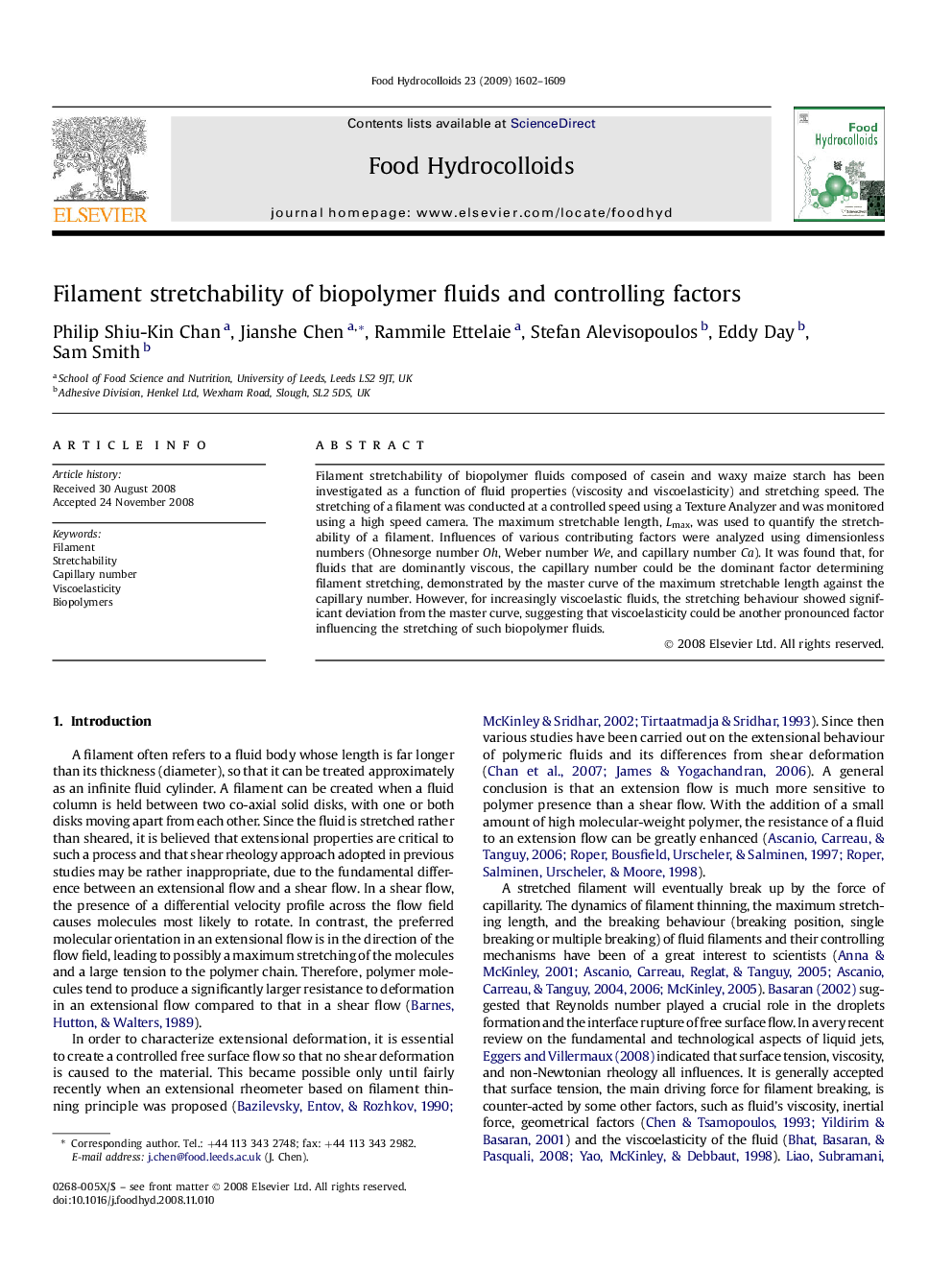| Article ID | Journal | Published Year | Pages | File Type |
|---|---|---|---|---|
| 604829 | Food Hydrocolloids | 2009 | 8 Pages |
Abstract
Filament stretchability of biopolymer fluids composed of casein and waxy maize starch has been investigated as a function of fluid properties (viscosity and viscoelasticity) and stretching speed. The stretching of a filament was conducted at a controlled speed using a Texture Analyzer and was monitored using a high speed camera. The maximum stretchable length, Lmax, was used to quantify the stretchability of a filament. Influences of various contributing factors were analyzed using dimensionless numbers (Ohnesorge number Oh, Weber number We, and capillary number Ca). It was found that, for fluids that are dominantly viscous, the capillary number could be the dominant factor determining filament stretching, demonstrated by the master curve of the maximum stretchable length against the capillary number. However, for increasingly viscoelastic fluids, the stretching behaviour showed significant deviation from the master curve, suggesting that viscoelasticity could be another pronounced factor influencing the stretching of such biopolymer fluids.
Related Topics
Physical Sciences and Engineering
Chemical Engineering
Colloid and Surface Chemistry
Authors
Philip Shiu-Kin Chan, Jianshe Chen, Rammile Ettelaie, Stefan Alevisopoulos, Eddy Day, Sam Smith,
